High Peaks Pure Earth has translated part of a series by Woeser written about Mount Kailash and Gyandrak Monastery and posted on her blog over 2021 in multiple parts. The translations started only with Part 7 of the series and below is Part 8 which was first posted on Woeser’s blog on May 1, 2021.
Gyandrak Monastery in western Tibet is one of five monasteries surrounding Mount Kailash and a popular destination on the pilgrimage route today. In the series, Woeser delves into the history of Gyandrak Monastery and also remembers her trips there. In this post specifically, Woeser focuses on the effects of mass tourism. The official designation of “4A National Tourist Attraction” is the second highest level of rating for tourist spots in the category system used by the Ministry of Culture and Tourism.
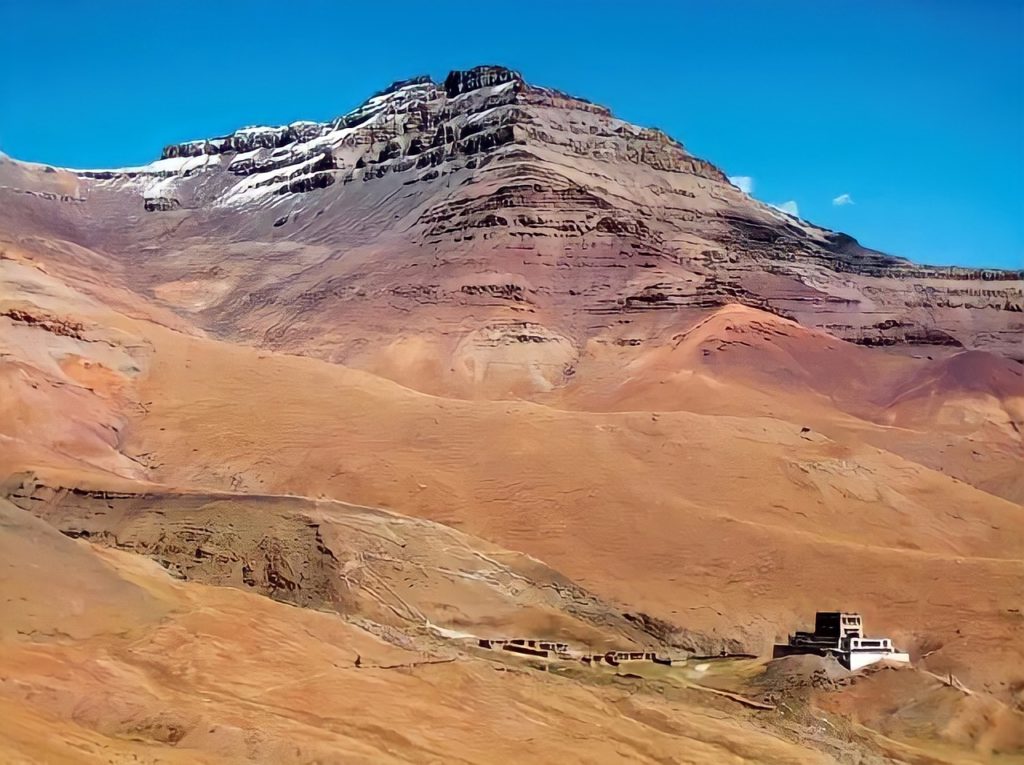
“Encounters at Mount Kailash: A Travelling Monk, Local Tibetans and the Exiled Spiritual Leader South of the Sacred Mountain (Part 8)” By Woeser
11. A story from Mount Kailash: 4A National Tourist Attraction”
Traditionally, one has to first complete 13 circumambulations of the outer circle of Mount Kailash before moving onto the inner circle to visit the palace-like Gyandrak Monastery. So when I went to Mount Kailash in 2002 and only did one circuit of the outer circle, I wasn’t actually qualified to go to the inner circle and, consequently, also not permitted to visit Gyandrak Monastery. There are many moving folk stories about the 13 circumambulations. For example, one story is about a woman who was so thirsty that she leaned over to drink water from the river, when her baby slipped out from her arms and was lost; she then followed the lama’s instructions and circumambulated the sacred mountain 13 times to free herself from the grief and pain and the unwillingness to live, and to leave this spiritual remedy for future generations to also be relieved from suffering. Of course, the more remarkable secret is related to the number of 13, rather than, let’s say, 1 or 9. Many pilgrims will immediately make several vows as soon as they finish circumambulating the mountain for the 13th time. These vows include becoming vegetarian, protecting all sentient beings etc. etc. As devoted pilgrims, they respect and abide by this tradition; and so one should not simply disregard it. There are legends about how disobedient people who went straight to the inner circle or explored the fantastic scenery would suffer from various punishments. So perhaps this isn’t all just nonsense.
But when I had a look online, I found that the inner circle had already been opened to tourists and Gyandrak Monastery has become one of the observation decks with a view on the sacred mountain, a so-called “4A National Tourist Attraction”. As long as one spends 200 Yuan on a ticket, the tour bus can drive directly to the front of the temple where heaps of tourists wander around the white stupas in their bright clothes. What ignorance!
Ten years ago, I wrote an appeal titled “Please stop the ‘development’ of Mount Kailash and Lake Manasarovar for profit”[1], in which I wrote: Recently, on the Sina Weibo micro-blogging website, friends who have just returned from Mount Kailash revealed that they witnessed construction projects on the mountain trying to widen the paths, and build a new highway. Soon enough, all kinds of vehicles will be able to drive up to Darchen Monastery, and some have even seen the erection of cable poles along the hillside. As I understand, the Tibetan Tourism Company is a subsidiary of the Beijing-based Guofeng Company. They have been “contracted” to take over the holy Mount Kailash, as well as Lake Manasarovar, and turn them into tourist areas. From the internet, I have discovered that The Tibetan Tourism Company in 2010 began publicly trading, using the Holy Mountain and the Sacred Lake as a way of selling shares. It is now known as the “Tibetan Kailash Manasarovar Tourism Development Project”, and includes “the development of the scenic area, the building of hotels and restaurants, purchasing of environmentally-friendly vehicles, oxygen plants and other facilities, etc.” In the future, they plan to have “a big entrance gate, scenic viewing towers, scenic motorcars and roads etc.” … This is not merely speculation, because there are many other sacred mountains and lakes, all doomed to suffer a similar fate and be butchered on the chopping board of business.”
I further wrote in the appeal: “The walk around the mountain and lake is a continuation of the traditions of pilgrims in the past, because only through the physical act of walking, and the “labour of the bones”, can one achieve religious sublimation. It is completely unnecessary to build highways, or have tourist cars travel these paths. On the contrary, highways and touristic cars will only to attract a certain kind of person. If we take the logic of cultural anthropology, this is a kind of “touristic imperialism” in order to blaspheme and destroy the holy mountain and lake.” “Mount Kailash and Lake Manasarovar is a specific sacred area, and every blade of grass, every tree, mountain or drop of water is treated with care by the Buddhist nation who has historically always protected the natural world and all livings things. This is reflected in their concept of a “cultural environment”, which has retained a place for human beliefs and traditions. Mankind has a shared belief of “natural heritage” and “cultural heritage”, and these things should be treasured, but most of all respected.”
The late American Tibetologist Elliot Sperling also issued a similar appeal[2] in which he pointed out: “the degradation of this religious site for the benefit of Chinese investors is not simply another insult for Tibetans to bear; it is a slap too at Indian pilgrims who also venerate Kailash as the abode of Śiva and visit and circumambulate it. Woeser draws on Wang Lixiong’s description in Sky Burial of Tibet as an immobile body, helplessly picked apart by birds of prey, to represent Tibetan impotence in the face of the blatant milking of Tibetan religious culture for financial gain. Her appeal for a halt to the development of the Kailash region (and the region of Tso Mapham) for monetary profit has received some notice abroad, but in view of the environmental and cultural debacle foreshadowed by these development plans, more concern is urgently needed.” Unfortunately, our appeals were just a drop in the ocean in the face of this overbearing power and unsatisfiable greed.
Apart from commercialising a religious site and polluting the environment to unacceptable degrees (a recent WeChat moments video taken by a local Darchen resident shows how the mountain surroundings are full of plastic bags, plastic bottles and other rubbish), the government has in recent years repeatedly meddled with the monastery that had been rebuilt with so much difficulty after the Cultural Revolution. From the official local government propaganda, what George Orwell’s termed newspeak in “1984”, we can see photos of officials stationed at Gyandrak Monastery guiding monks to “emphasise unity, love the motherland and raise the national flag,” with the scarlet red flag viciously fluttering in the wind. “Comrade Yeshe Lhagyal, director of the monastery management committee, uses the way monks are willing to listen, understand, and be grounded”, asking everyone to “actively strive to be politically reliable, religiously accomplished, and morally convincing advanced monks who perform their duties when it is required”[3]. In recent years, this monastery that is home to no more than ten monks has been subject to all sorts of political campaigns. For example, “the launch of the ‘Strengthen Ethnic Unity and Build a Beautiful Tibet’ campaign,” “the launch of the ‘Develop the Spirit of the Fifth Plenary Session of the 19th Central Committee Meeting and its Seventh Tibet Work Symposium’ campaign,” and the “launch of the ‘Support the Army and Love the People; Monks go to Army Camps’ activity.” Tough times for Gyandrak Monastery.
Notes:
[1] http://woeser.middle-way.net/2011/07/blog-post_2345.html In English: https://highpeakspureearth.com/please-stop-the-development-of-mount-kailash-and-lake-manasarovar-for-profit-by-woeser/
[2] Kailash: An Appeal http://www.rangzen.net/2011/07/14/kailash-an-appeal/ In Chinese: http://woeser.middle-way.net/2011/07/blog-post_15.html
[3] Wangxin Burang (December 3, 2020): The Puhrang County Gyandrak Monastery Management Committee open the Fifth Plenary Session of the 19th Central Committee Meeting and its Seventh Tibet Work Symposium: https://mp.weixin.qq.com/s/3cevdcW7Jc8_i4czoxJ0Wg
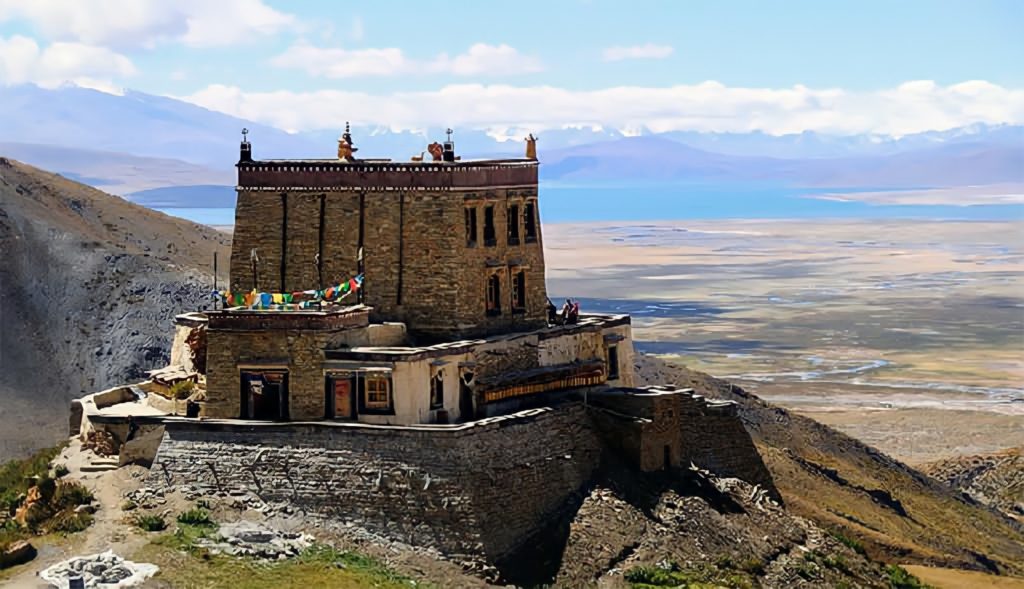
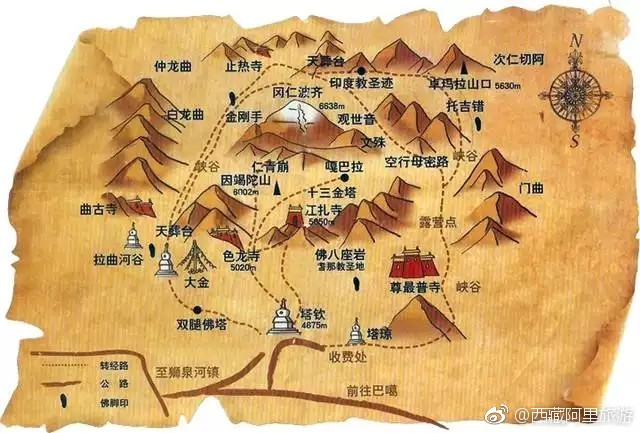


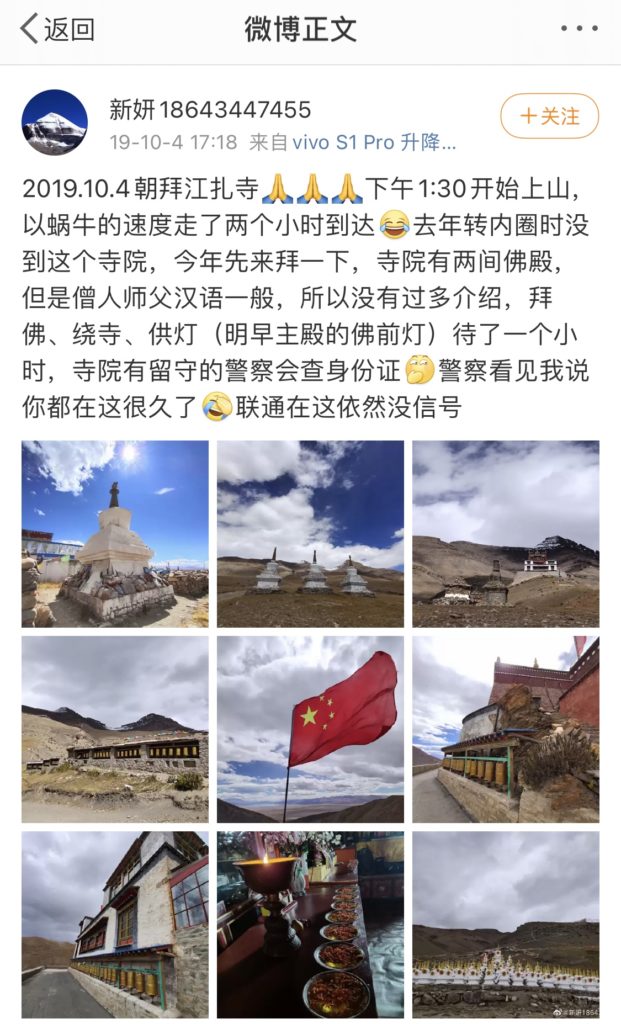
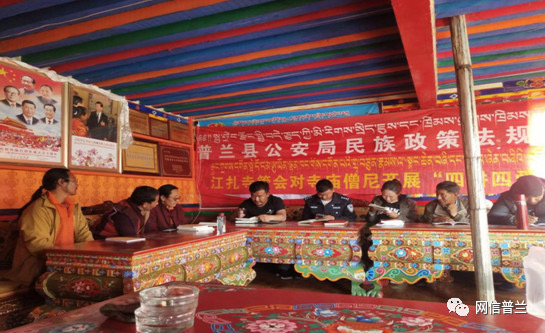


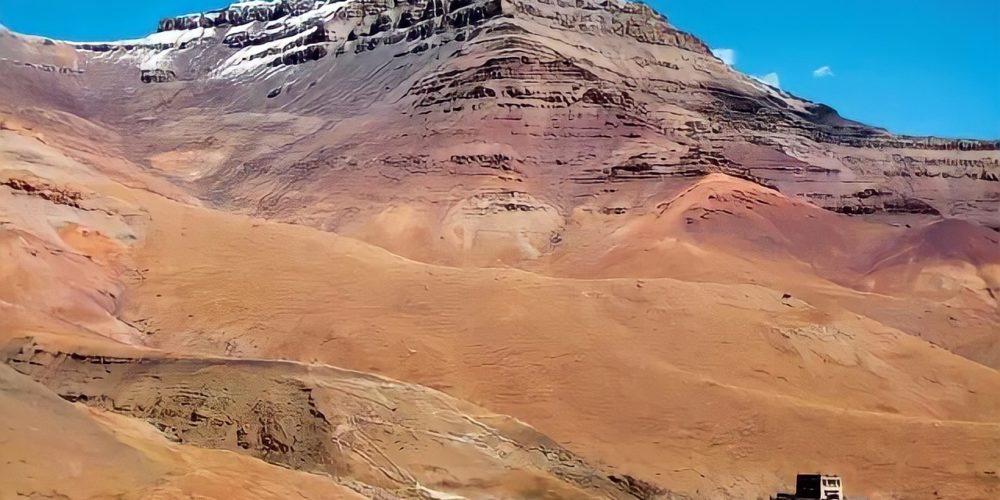



Tibet’s one of the holiest sites. World must must shame CCP. Thanks Woeser la@